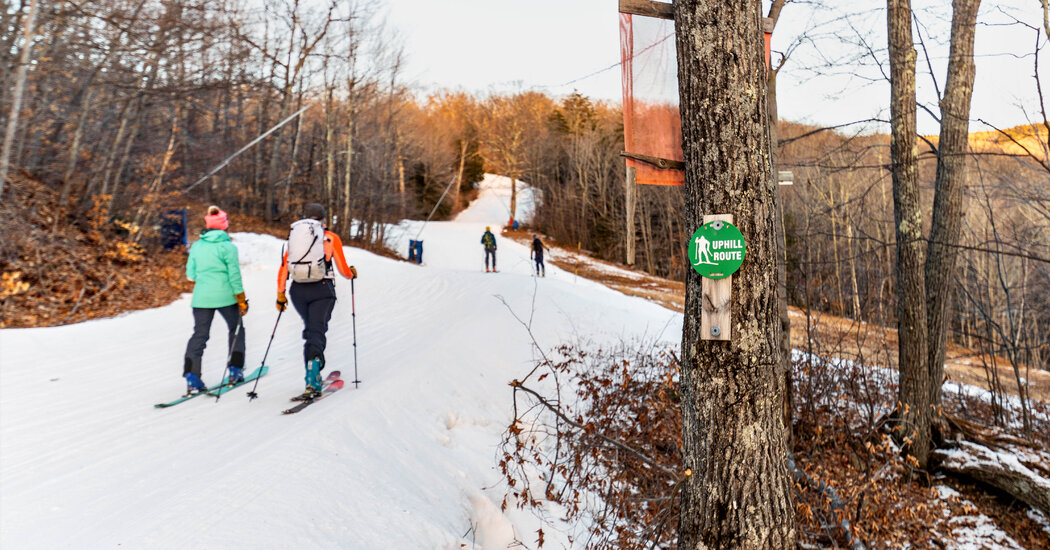
Early last February, at the Mount Washington Backcountry Ski Festival in New Hampshire, the organizers faced an increasingly common problem: Terrible snow.
Four days of temperatures over 40 degrees combined with an already shallow snowpack had rendered many backcountry ski zones unskiable. Up on Mount Washington, where the higher elevations usually mean colder temperatures, what had been soft, wet snow had hardened into ice when the temperature dropped in the late morning.
Corey Fitzgerald, 36, the owner of Northeast Mountaineering in Glen, N.H., who was supposed to photograph a backcountry tour group on the festival’s third day, headed to an area called Gulf of Slides to check out the conditions. He skied into one of the slides ahead of the group and found that “it was just bulletproof,” or so icy that his skis just bounced off the surface, Mr. Fitzgerald said.
“I thought people were just going to fall down the gully. And the snow was so low that there was an ice bulge still visible in the middle.”





